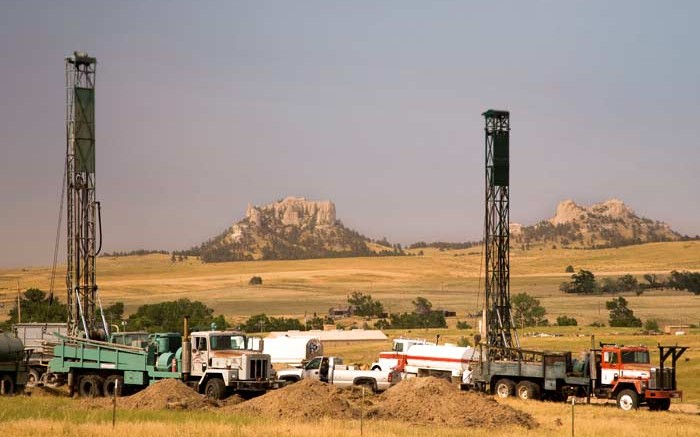The North Butte in-situ uranium mine in Wyoming has started initial production as a satellite facility for Cameco’s (CCO-T, CCJ-N) Smith Ranch-Highland in-situ mine.
North Butte is expected to produce 300,000 lb. uranium concentrate this year and ramp-up to an annual production rate of more than 700,000 lb. uranium concentrate by 2015.
Resin containing uranium from North Butte will be transported to a central processing facility at Smith Ranch-Highland to be turned into uranium concentrate. Cameco is also in the final stages of refurbishing and bringing back into operation a second processing facility at Smith Ranch-Highland, which has not operated for several years.
This second plant will help Cameco increase production from material provided from North Butte and two more planned satellite mines, as well as toll processing.
Elsewhere in the U.S., Cameco operates the Crow Butte in-situ uranium mine and central processing facility in Nevada, and has five other satellite sites in various stages of development and regulatory approval in Wyoming and Nevada.
Mining analyst Rob Chang of Cantor Fitzgerald in Toronto expects Cameco’s U.S.-based ISR production will reach 2.6 million lb. uranium oxide (U3O8) this year. Of that amount, 1.8 million lb. is expected to come from the Smith Ranch-Highland and another 0.8 million lb. from Crow Butte. He also estimates 11% of the 23.2 million lb. U3O8 Cameco will produce this year will stem from its in-situ recovery (ISR) operations.
North Butte is the latest ISR uranium mine to come online this year, but it won’t be the last. Chang says he anticipates “a lot of action in the space for the remainder of the year” and points to Ur-Energy’s (URE-T, URG-N) Lost Creek ISR mine, which he says should begin initial production in the coming months, and Uranerz Energy’s (URZ-T, URZ-N) Nichols Ranch mine, which could be in production before year-end.
But he also comments that “Cameco’s ability to bring on new well fields in both Wyoming and Nebraska into production is being affected by the lengthened review process to obtain regulatory approval.”
In broad terms, Chang believes that investors will warm to the favourable supply and demand fundamentals of uranium and to Cameco’s attractive position in the market. Due to Uranium One (UUU-T) soon going private, he explains, “fund flows towards Cameco are likely as investment dollars targeted towards exposure to the excellent supply and demand fundamentals of uranium flow from a plus-billion-dollar company to the sole remaining one.”
Chang adds that “there were only five publicly traded uranium-focused producers to begin with . . . and the supply of investment choices for investors looking for exposure to the uranium market becomes even more limited, especially for portfolios looking for the liquidity of a [greater than] $1-billion market capitalization.”
In terms of the outlook for uranium, chief executive Tim Gitzel sounded optimistic on a conference call earlier this month. In January, Japan’s Nuclear Regulation Authority issued draft safety guidelines outlining the proposed requirements for the restart of nuclear reactors in the country, and Gitzel predicts Japan could restart six to eight nuclear reactors this year. Canada’s Nuclear Co-operation Agreement with India this year is also a significant step forward, he says, as it allows Cameco to sell its uranium there. By some estimates India will have a total of 34 reactors operating by 2022. And India is just one driver of growth.
“Countries like China, Russia, South Korea and the United Arab Emirates are also pursuing rapid development and expansion of their nuclear programs,” Gitzel told investors and analysts on the conference call. “China alone has twenty-eight reactors under construction today, with six of those planned to come online this year.”
He forecasts uranium consumption will grow from 170 million lb. to 220 million lb. by 2022 — an average annual growth rate of 3%. “That’s why you see us working to increase our annual supply from the 23.3 million lb. we will produce this year to 36 million lb. per year by 2018, so that we can be ready to fill that demand,” he said.
On the supply side of the equation, the Russian Highly Enriched Uranium Agreement ends this year, taking about 24 million lb. per year from the market, “which equates to more than Cameco’s entire annual production.”
In addition, low uranium prices in recent years have given little incentive to producers to bring on new production, just as future supply has suffered with the cancellation or deferral of projects in 2012.


Be the first to comment on "Cameco fires ups third ISR uranium mine in US"